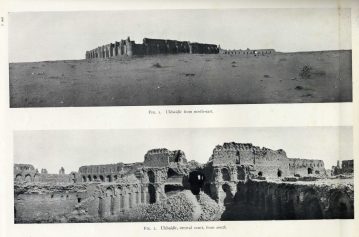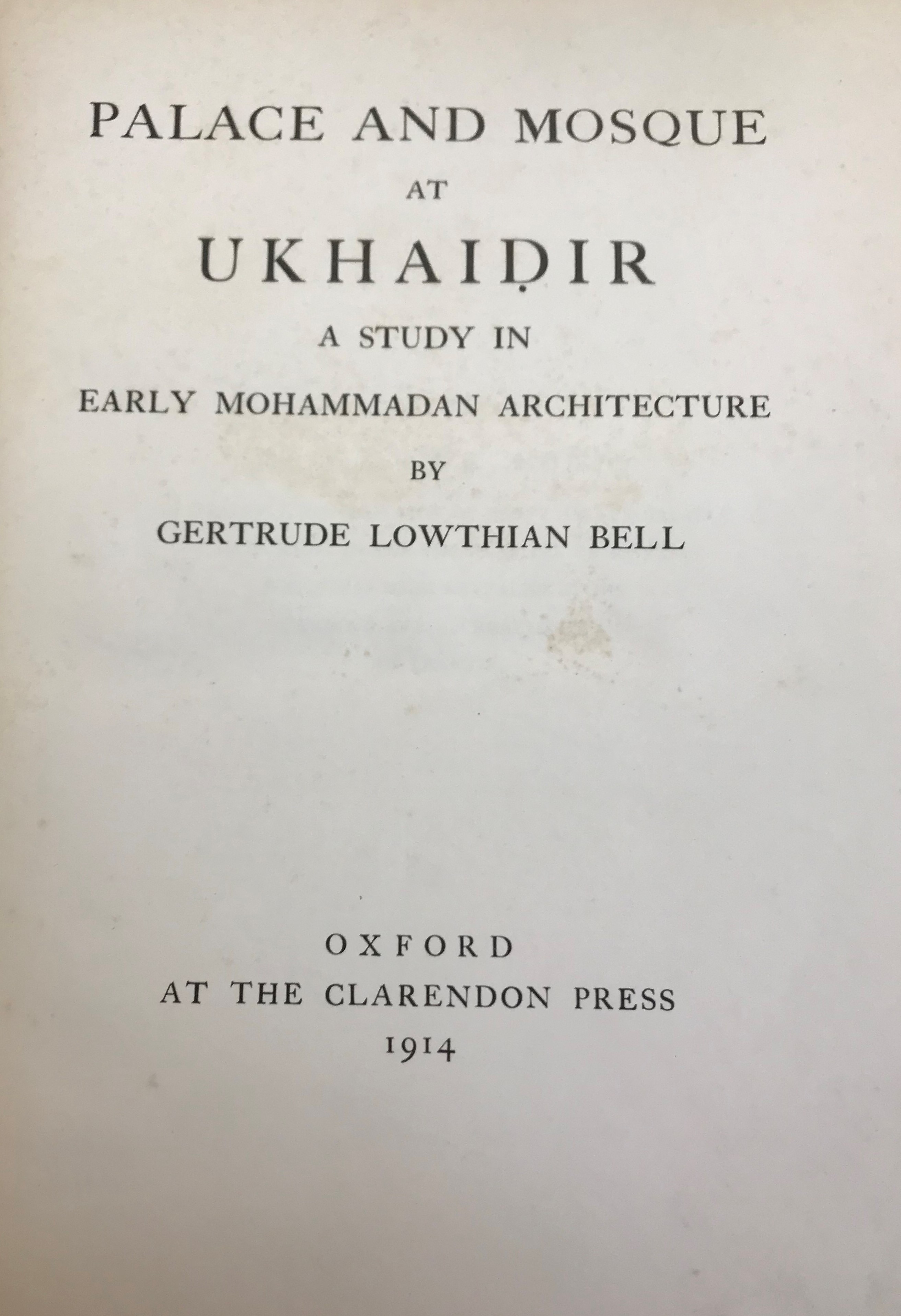Palace and Mosque at Ukhaidir. A Study in Early Mohammadan Architecture.
Bell, Gertrude Lowthian.
Synopsis
Very scarce work.
“I have attempted in this book to bring together the materials, so far as they are known, which bear upon the earliest phases of Mohammadan architecture, to consider the circumstances under which it arose and the roots from which it sprang. No development of civilization, or of the arts which serve and adorn civilization, has burst full-fledged from the forehead of the god ; and architecture, which is the first and most permanent of the arts, reflects with singular fidelity the history of its creators…. Of these buildings, the most important is the great palace of Ukhaidir on the eastern side of the Syrian desert. I have given, also, the first plans and photographs of three small ruins in its vicinity, Qsair, Mudjdah, and Atshan. If they do not belong to the same period as the palace, they cannot be far removed from it in date. The problems presented by Ukhaidir led me back to Sasanian architecture, and I publish here new plans and photographs of two vast constructions at Qasr-i- Shirin. I have, further, taken this occasion to publish the plans of two mosques, the one at Diyarbekr, the other at Mayafarqin, both of which belong to a later period. The first of these has been known to us only through a sketch made by Texier, which I found to be inaccurate in many significant points, as it is also incomplete. The second has not previously been studied.
The palace of Ukhaidir was practically unknown until the winter of 1908-9, although it had been seen by European travellers as early as the seventeenth
century. Delia Valle passed by it in June 1625 on his way from Basrah to Aleppo, and described it as “a great ancient fabric, perfectly square, with thirteen pilasters or round columns on each side without, and other compartments of arches ; within which were many chambers, with a court of no great bigness and uncovered. The Arabians call this fabric Casr Chaider. I could not conjecture whether it had been a palace or temple or castle ; but I incline to believe it a palace rather than anything else.” [Preface].








